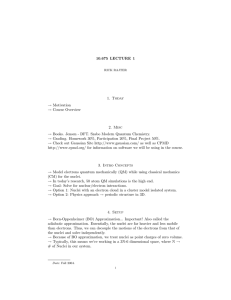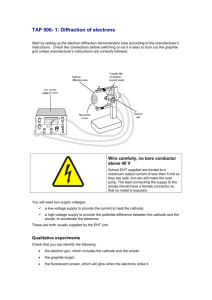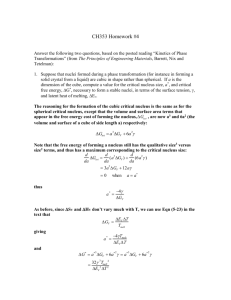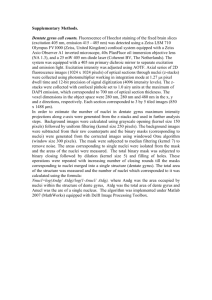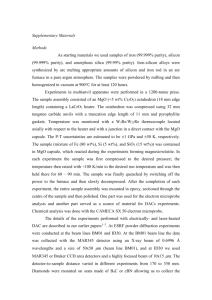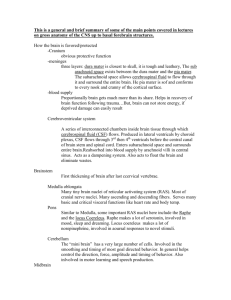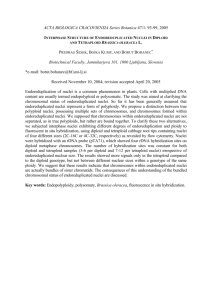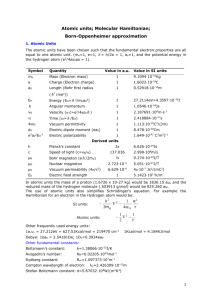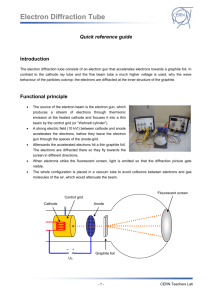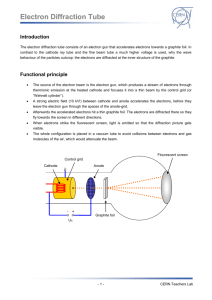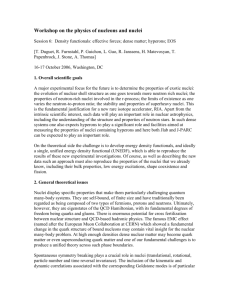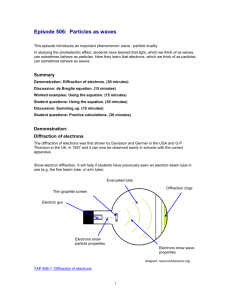Interpreting electron diffraction patterns
advertisement
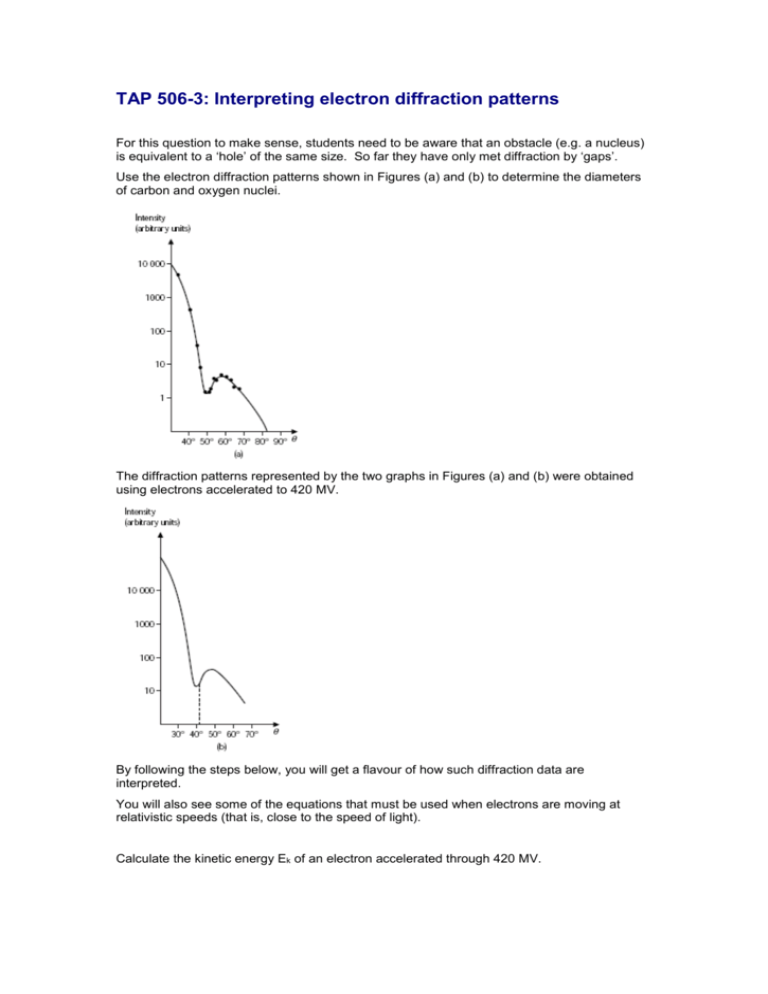
TAP 506-3: Interpreting electron diffraction patterns For this question to make sense, students need to be aware that an obstacle (e.g. a nucleus) is equivalent to a ‘hole’ of the same size. So far they have only met diffraction by ‘gaps’. Use the electron diffraction patterns shown in Figures (a) and (b) to determine the diameters of carbon and oxygen nuclei. The diffraction patterns represented by the two graphs in Figures (a) and (b) were obtained using electrons accelerated to 420 MV. By following the steps below, you will get a flavour of how such diffraction data are interpreted. You will also see some of the equations that must be used when electrons are moving at relativistic speeds (that is, close to the speed of light). Calculate the kinetic energy Ek of an electron accelerated through 420 MV. To calculate the momentum of the electron, you cannot use p=mv and EK = ½ mv2, because these equations don’t apply to relativistic particles. Instead, it turns out that the electron’s momentum p is related to its kinetic energy by Ek ~ pc where c is the speed of light. Calculate the momentum of the electron. The de Broglie relationship p = h applies to relativistic and non-relativistic electrons because Relativity Theory is used in its derivation. Calculate the electron’s de Broglie wavelength. The angle of the first minimum θmin on the graph is a clearly identifiable point, and this is used to calculate the diameter of the nuclei. From the graphs in Figure (a) and (b), determine the angle of the first minimum for carbon nuclei, and for oxygen nuclei. The smaller the nucleus, the more it diffracts the electrons. From the angles you found, which are smaller, carbon nuclei or oxygen nuclei? Is this what you would expect from their atomic numbers? The diameter d of the nucleus is related to the electron wavelength and the diffraction angle θmin by Use this relationship to obtain estimates of the diameters of carbon and oxygen nuclei. Explain why your answers are only estimates. External references This activity is taken from Salters Horners Advanced Physics, section PHM, activity 19 which was an adaptation of Revised Nuffield Advanced Physics section L question 37(L). Answers and worked solutions Ek = 420 x 106 x 1.60 x 10-19 = 6.72 x 10-11 J Ek ~ pc so p = 6.72 x 10-11 / 3 x 108 = 2.24 x 10-19 N s = h/p = 6.63 X 10 -34 / 2.24 x 10-19. = 2.96 x 10-15 m (a) carbon nuclei, 50° (b) oxygen nuclei. 42° d = 1.22 θ min where d is the diameter of the nucleus Remember, the angle should be in radians or use sin θ. (a) carbon d = (1.22 x 2.96 x 10-15) / 0.766 = 4.7 x 10-15 m (b) oxygen d = (1.22 x 2.96 x 10-15) / 0.669 = 5.3 x 10-15 m

